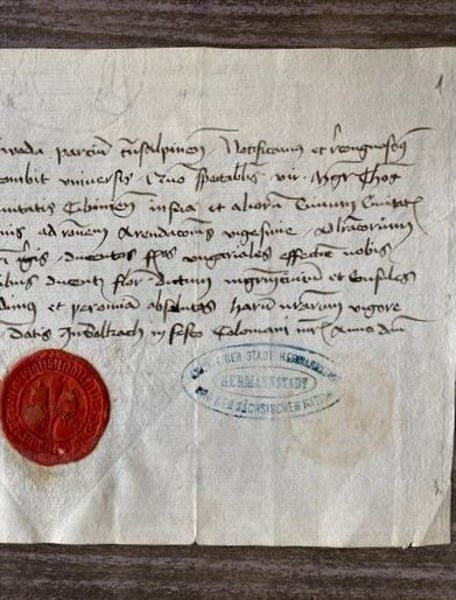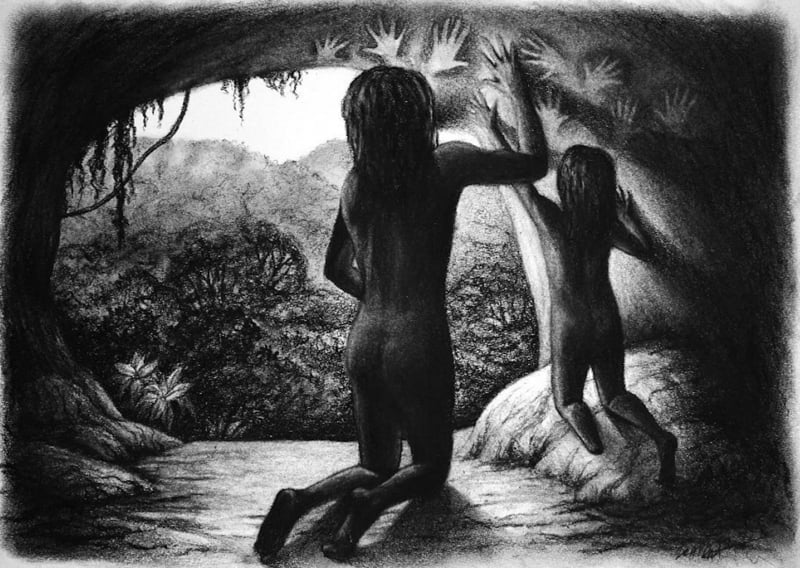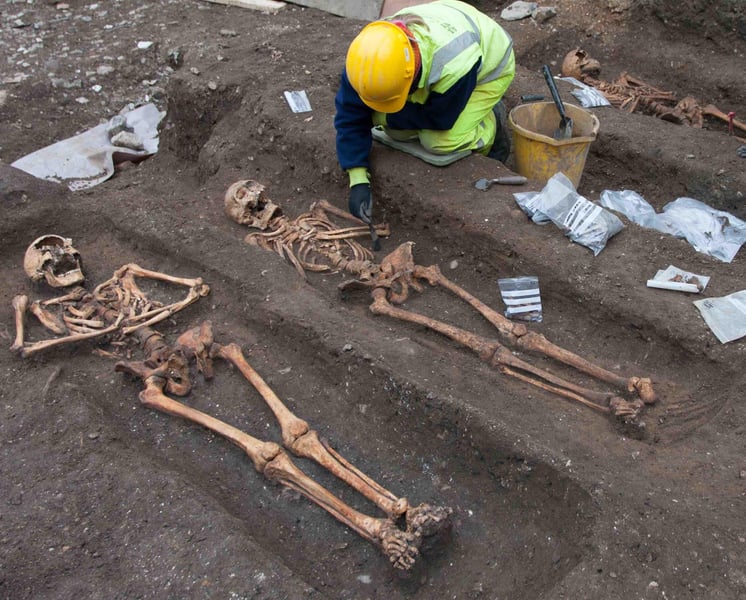Manténgase sano!
Resultados de su búsqueda "History of Medicine".
Resultados de noticias de salud - 14
A 4,000-year-old skull provides evidence that ancient Egyptians might have tried to treat cancer, a new study claims.
Microscopic observation of the skull revealed 30 or so lesions scattered across its surface that are consistent with cancer, researchers report.
T...
- Dennis Thompson HealthDay Reporter
- |
- May 29, 2024
- |
- Página completa
Rare gene-driven defects such as Down syndrome have occurred among human beings for many thousands of years, a new analysis of ancient DNA has revealed.
Not only did the birth defects exist, but these infants were often buried with care by their community. That suggests they were included as part of the community despite their differences, researchers said.
Six cases of Down syndrom...
- Dennis Thompson HealthDay Reporter
- |
- February 21, 2024
- |
- Página completa
It has long been believed that the 1918 flu pandemic disproportionately affected healthy young adults, but a study of human remains tells a different story.
Together, Canadian and American researchers found that preexisting medical conditions like asthma and lower income increased the likelihood of death, just as in other pandemics, including COVID-19.
"Our circumstances -- soc...
- Cara Murez HealthDay Reporter
- |
- October 10, 2023
- |
- Página completa
The 15th century prince who inspired the literary vampire Dracula may have had medical issues that caused him to cry tears of blood, according to researchers unearthing this ancient mystery.
The prince, who was also a military leader, was known as Vlad III, Voivode of Wallachia and as Vlad the Impaler. He was also called Vlad Drăculea, translating to "the son of the dragon," and may ...
- Cara Murez HealthDay Reporter
- |
- August 18, 2023
- |
- Página completa
Scientists have found evidence of ancient parasites preserved in the dung of an aquatic predator from more than 200 million years ago.
The ancient predator -- believed to be an extinct crocodile-like reptile called a phytosaur -- was infected with nematodes and multiple other parasite species.
While parasites are a common and important part of ecosystems, ancient parasites are hard ...
- Cara Murez HealthDay Reporter
- |
- August 10, 2023
- |
- Página completa
Cervical cells from Henrietta Lacks, a cancer patient who died more than 70 years ago, are a cornerstone of modern medicine, but her family has never been compensated for the cells taken without her knowledge.
Until now.
Thermo Fisher Scientific of Waltham, Mass., has settled a lawsuit filed in 2021 by the...
- Cara Murez HealthDay Reporter
- |
- August 1, 2023
- |
- Página completa
Genetic analysis of Ludwig van Beethoven's hair has provided new clues into the cause of the great composer's death in 1827 -- as well as evidence of a family scandal.
The analysis revealed that Beethoven suffered from a hepatitis B infection that could have contributed to his death from liver disease.
Researchers found DNA evidence of hepatitis B virus in a lock of hair taken from ...
- Dennis Thompson HealthDay Reporter
- |
- March 22, 2023
- |
- Página completa
While the origins of smallpox has remained a mystery for centuries, researchers now believe that it dates back 2,000 years earlier than previously thought.
Until recently, the earliest genetic evidence of smallpox, the variola virus, was from the 1600s. And in 2020, researchers found evidence of it in the dental remains of Viking skeletons, pushing its existence 1,000 years earlier.
- Cara Murez HealthDay Reporter
- |
- January 11, 2023
- |
- Página completa
That special link you may have with a purring, four-legged friend has been going on between the species for millennia, new research shows.
The human-cat relationship was probably forged over a shared interest in rats more than 10,000 years ago, investigators say. As farming became a way of life, cats served as ancient pest control, killing rodents and making a bond with people that contin...
- Cara Murez HealthDay Reporter
- |
- December 8, 2022
- |
- Página completa
A "virtual autopsy"of a mummified 17th century Austrian infant has shed new light on Renaissance childhood -- as well as the importance of vitamin D to health.
The researchers used CT scans to examine the remains, which had been found in an aristocratic Austrian family crypt containing the perfect condit...
- Dennis Thompson HealthDay Reporter
- |
- October 26, 2022
- |
- Página completa
Skeletal remains of a young adult discovered in a remote cave in Borneo appear to be the oldest known case of surgical amputation.
Australian and Indonesian researchers estimate the bones are at least 31,000 years old. It appears that the young adult lost his foot and lower leg in childhood and lived for at least six to nine more years after that, they said.
"
Medieval monks were much more wormy than average folks, a new archaeological analysis has revealed.
Those living in medieval Cambridge were nearly twice as likely to be infected by intestinal parasites as city dwellers, researchers found.
Even though Augustinian friars had access t...
- By Dennis Thompson HealthDay Reporter
- |
- August 19, 2022
- |
- Página completa
Researchers have long suspected that humans evolved to tolerate dairy products in order to reap their health benefits. Now a new study refutes that idea.
Around one-third of the world's population possesses a gut enzyme that allows them to digest lactose, a sugar in milk. Those lucky individuals -- mostly of European heritage -- can feast on dairy products without suffering digestive woes...
- Amy Norton HealthDay Reporter
- |
- July 27, 2022
- |
- Página completa
A centuries-old mystery as to the origins of the Black Death has been solved, according to an international team of scientists.
They said the plague pandemic that killed up to 60% of people in Europe, the Middle East and northern Africa in the mid-1300s originated in central Asia in what is now Kyrgyzstan.
Plague first entered the Mediterranean in 1347 on trade ships from the East. ...
- By Robert Preidt HealthDay Reporter
- |
- June 15, 2022
- |
- Página completa













